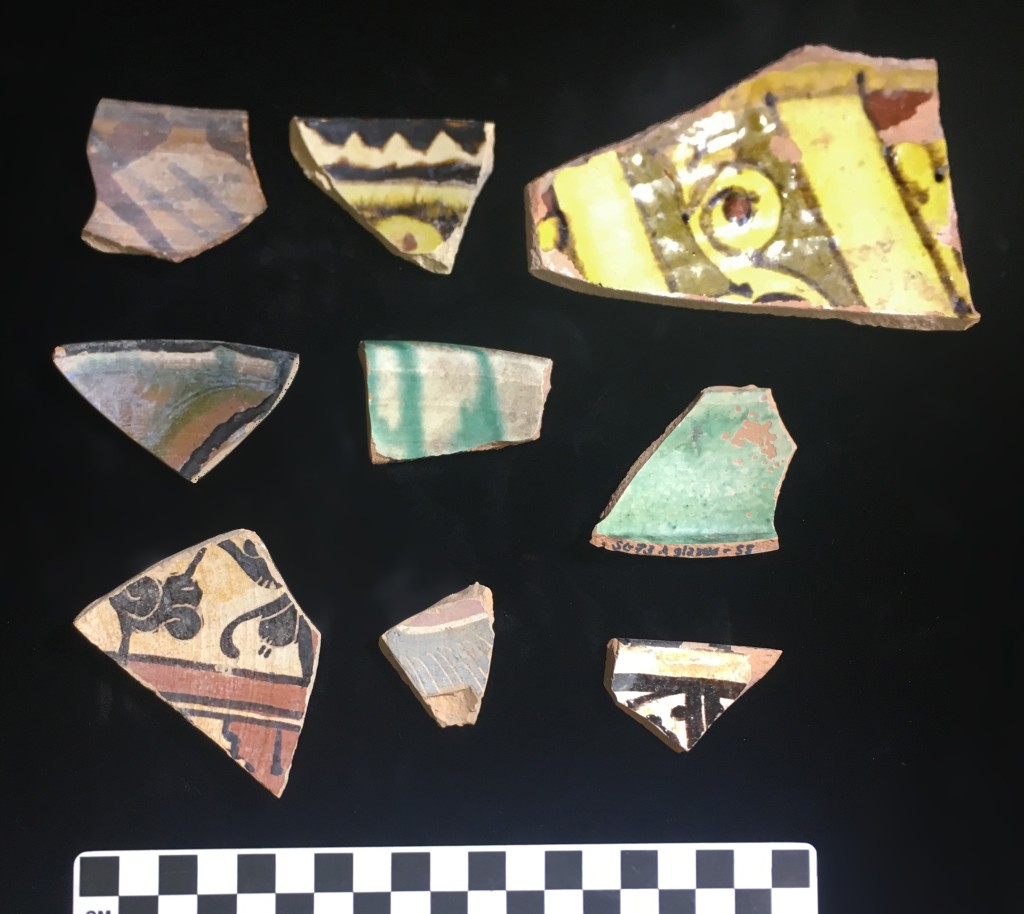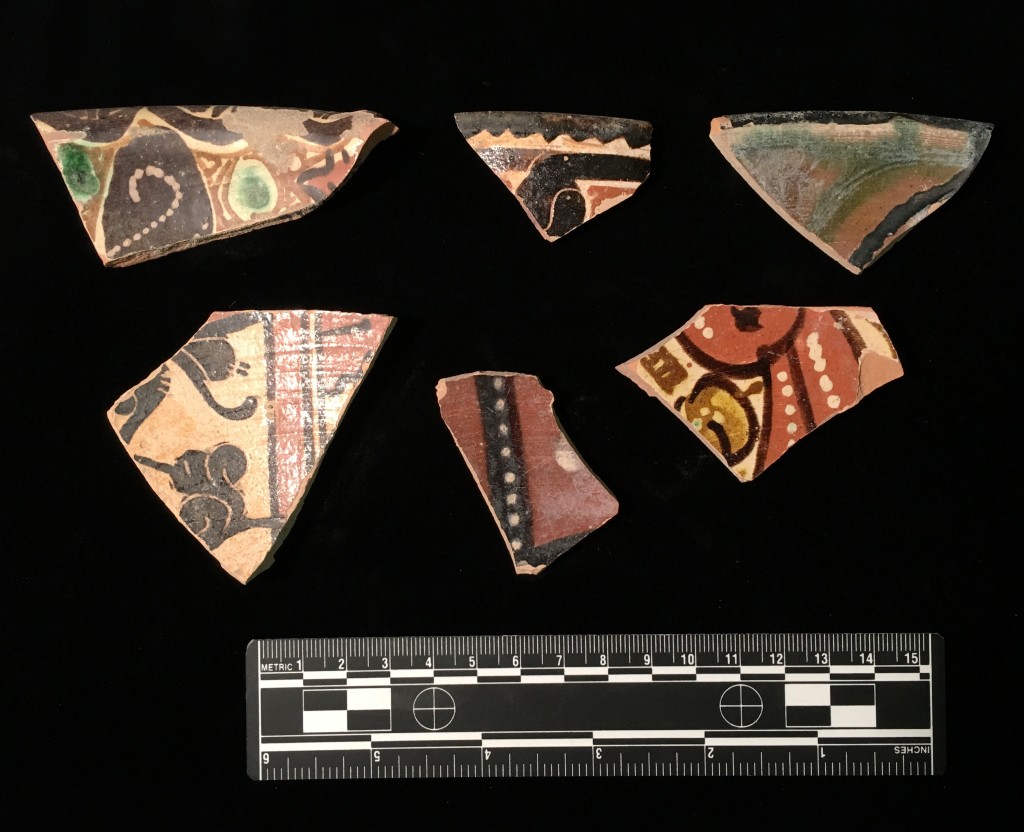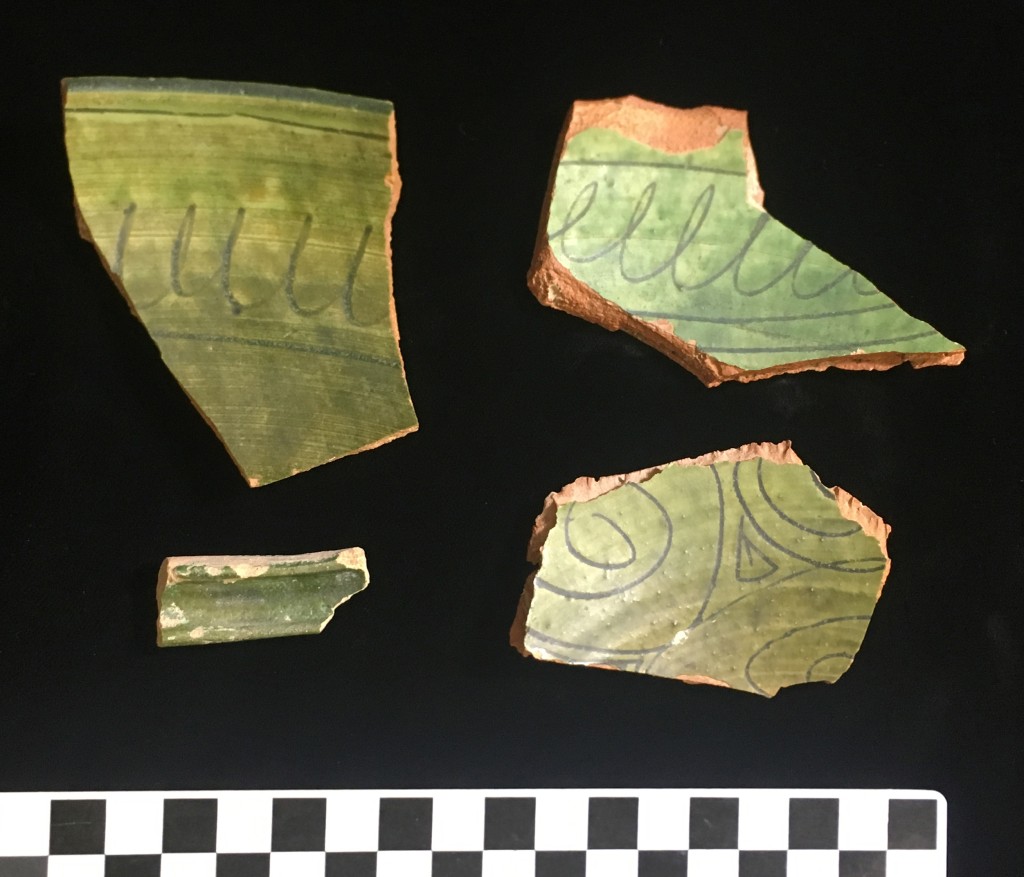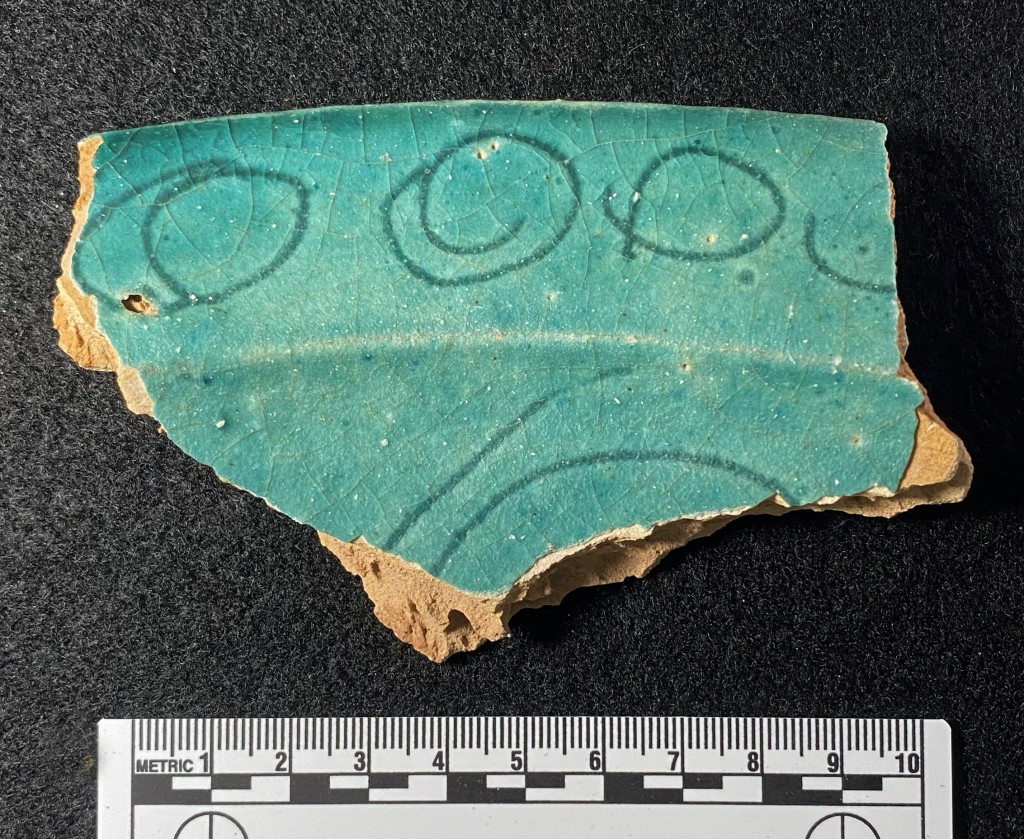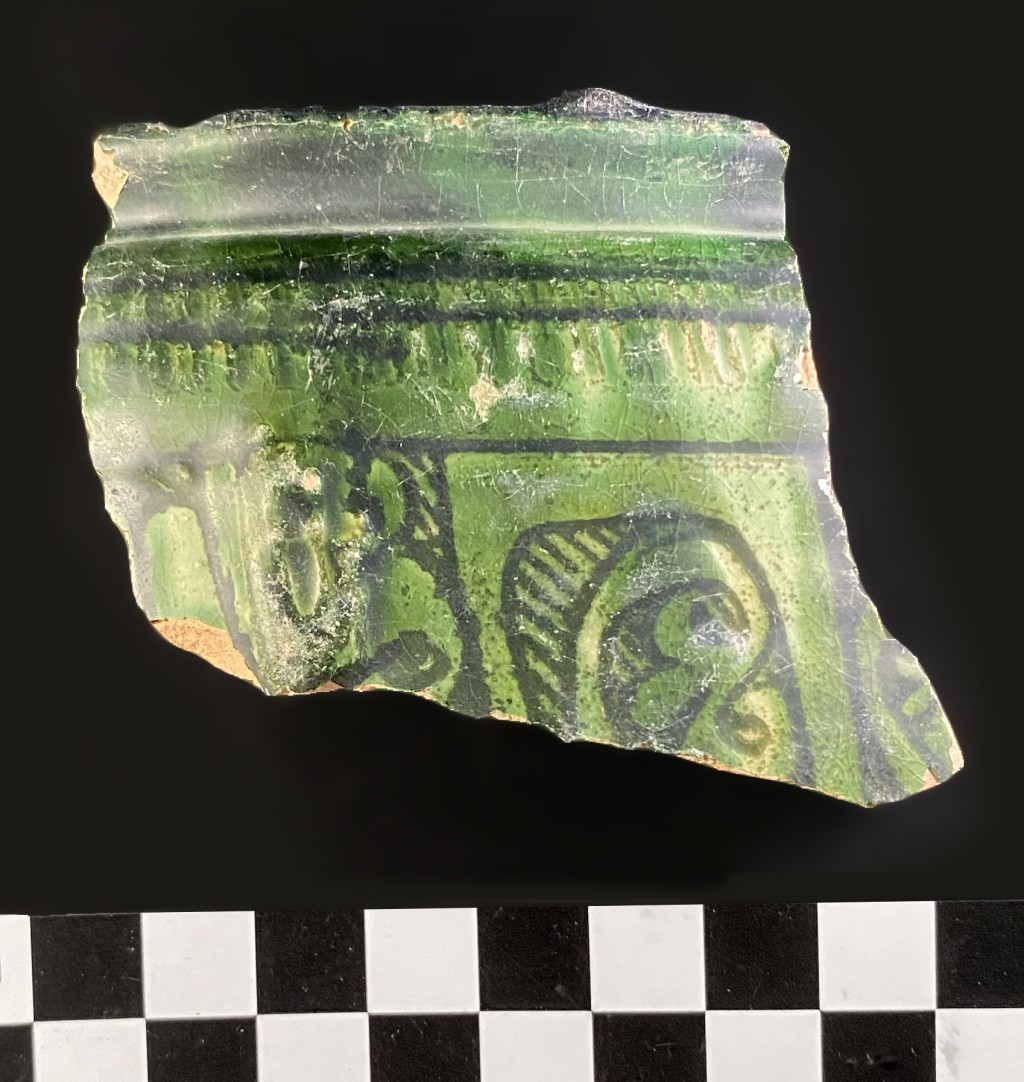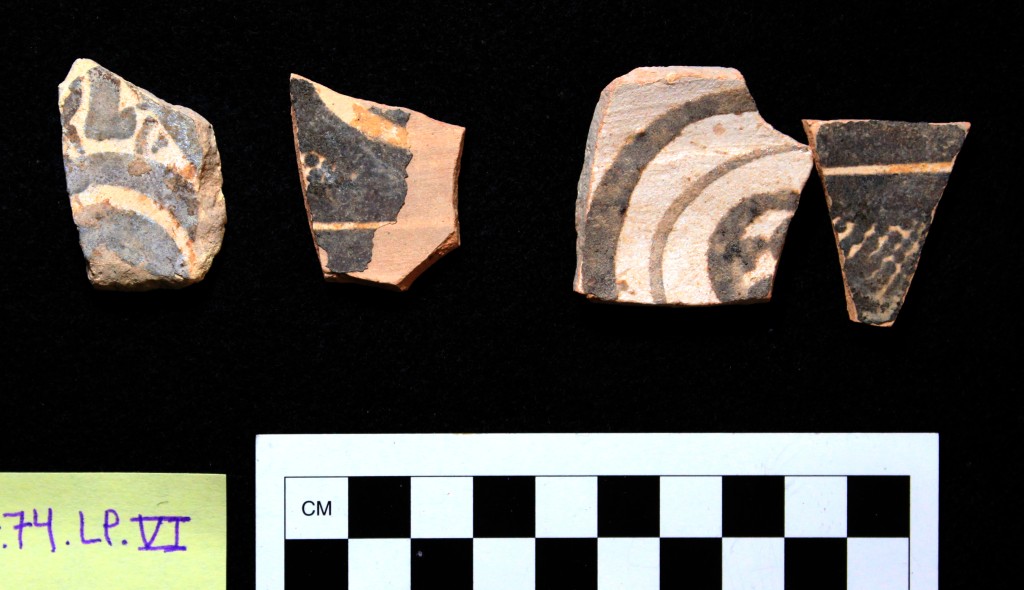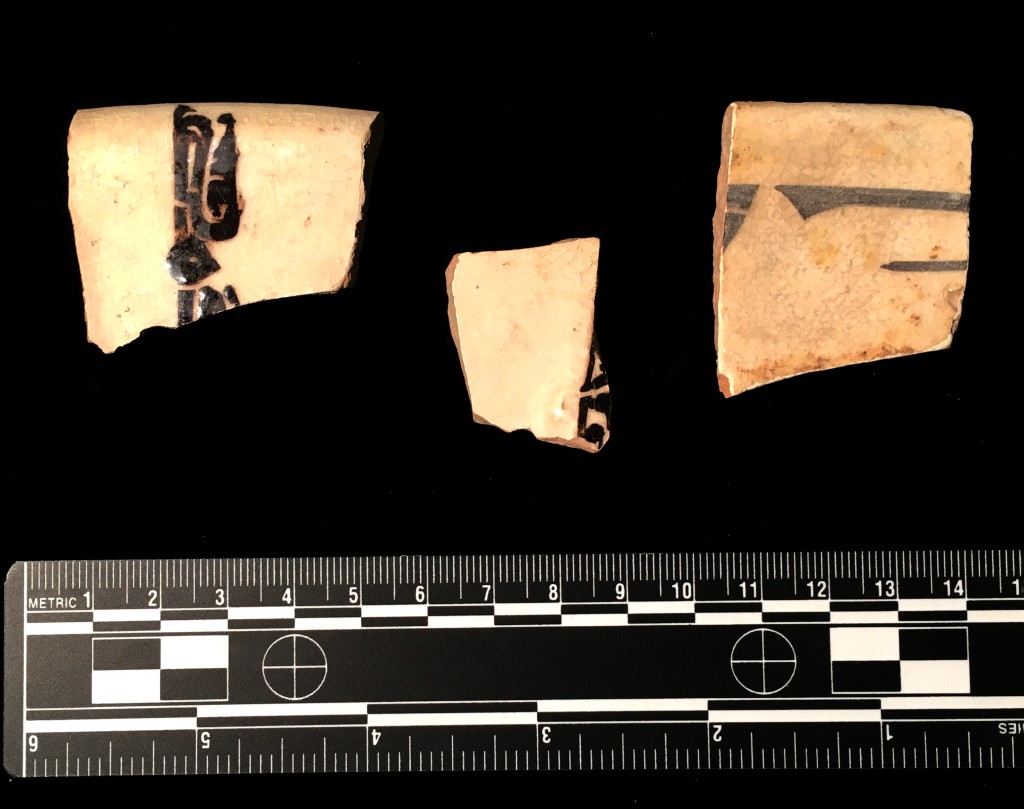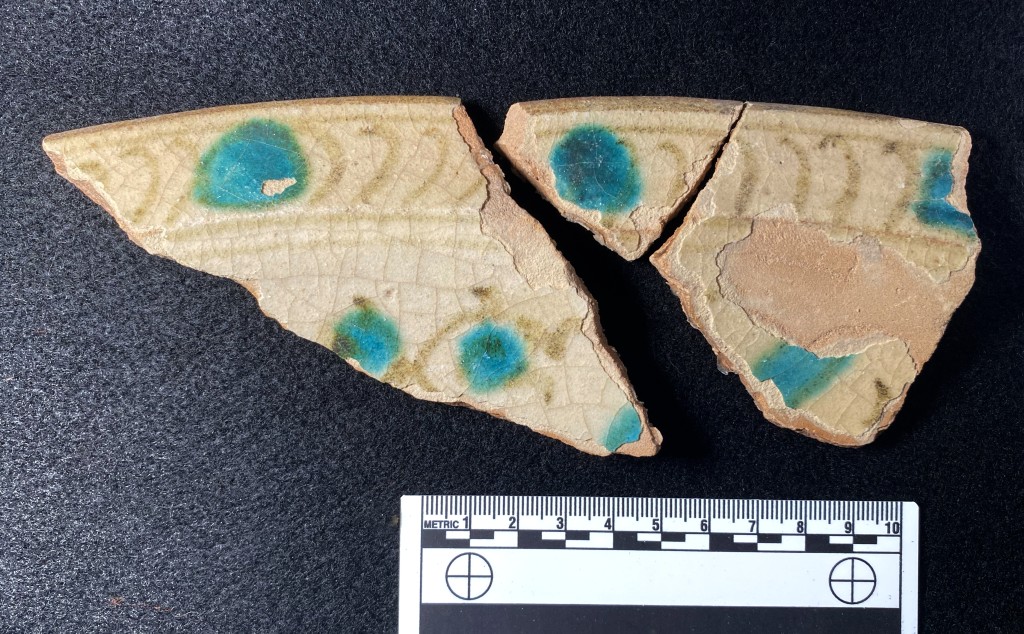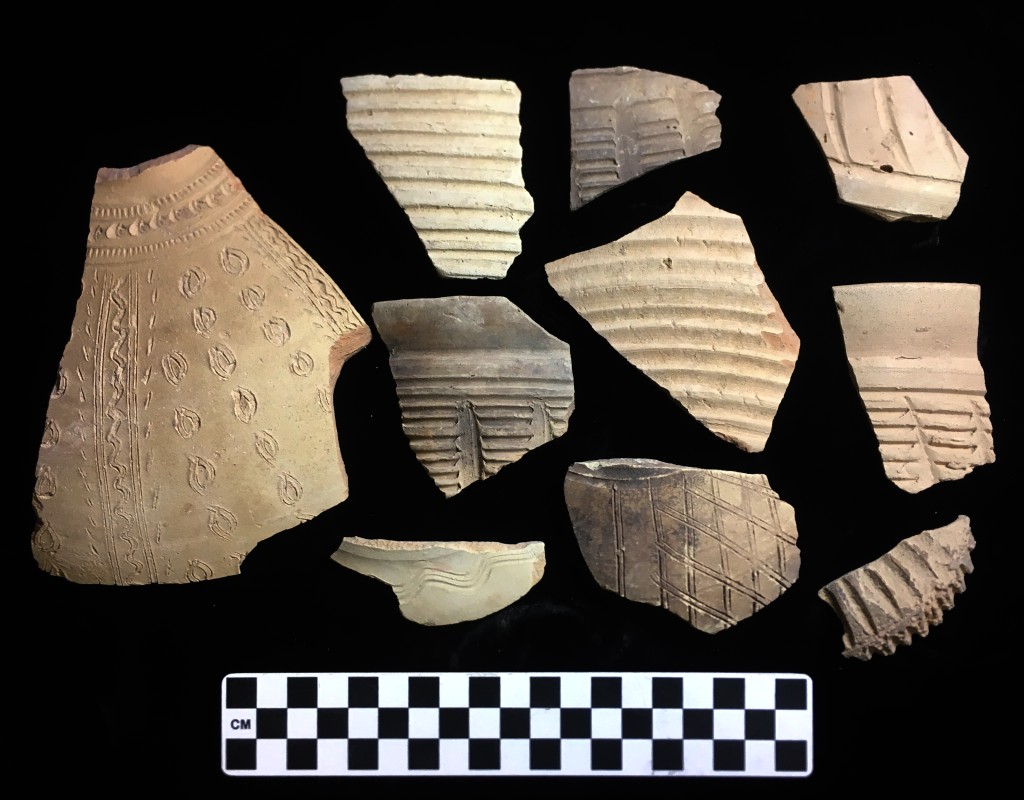Saffarid and Ghaznavid
We have numerous glazed sherd collections from the Saffarid (9th to 10th centuries CE) and Ghaznavid (11th century) periods, many styles of which overlap. While stylistically very different from the pre-Islamic styles, they generally are made from hard fired wares like their predecessors, though in lighter colors—tan to buff. The assemblage shows a full range of Eastern slip ware from splashware to Calligraphic Black on White Slip to sgraffiato ware.
Most of the later glazed wares in this sequence had incised decorations beneath olive, yellow, turquoise, or brown glazes. There are also luster wares with stylized sgraffiato inscriptions.
While numerous non-glazed wares were also found at sites from these periods, we are still in the process of analyzing them. However, ribbed ware, common in pre-Islamic times, continue into this period, as do incised decorations on large jars. There are instances of early Islamic cut ware.
